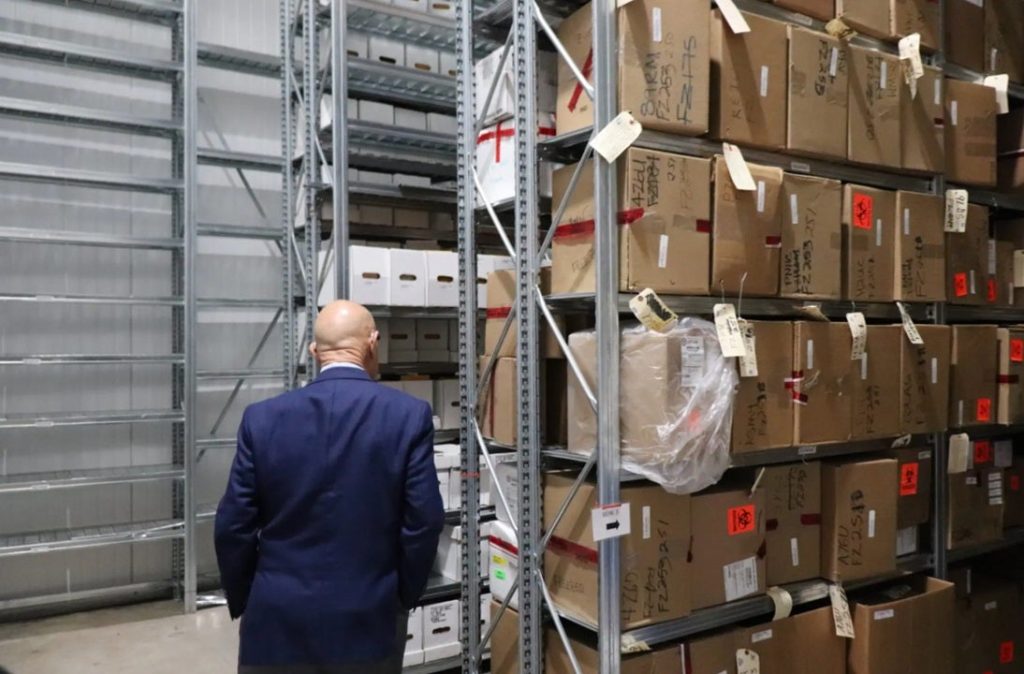The Houston Police Department (HPD) and the Harris County District Attorney’s Office have unveiled a significant overhaul of their evidence storage and processing procedures, prompted by a rodent infestation that compromised the integrity of stored evidence, particularly marijuana. The issue came to light in October when HPD officials discovered rats consuming marijuana stored in the evidence property room. The sheer volume of stored marijuana, estimated at 400,000 pounds, provided a veritable feast for the rodents, creating a unique challenge for authorities. This infestation highlighted a broader problem of excessive evidence retention, with much of it no longer relevant to active or closed cases. The discovery has spurred a collaborative effort among HPD, the District Attorney’s office, and the Houston Forensic Science Center to streamline evidence handling, prioritize crucial materials, and dispose of outdated items.
The scale of the storage problem is staggering. HPD currently holds approximately 1.2 million pieces of evidence, a significant portion of which is deemed no longer pertinent to any ongoing or concluded legal proceedings. This accumulation includes an array of items, from mundane objects like sticks, tennis rackets, and rocks, to more crucial pieces of evidence. The practice of retaining such a vast quantity of material for extended periods, sometimes decades, stems from a confluence of factors, primarily communication breakdowns and legal ambiguities surrounding evidence disposal. These systemic issues have created an environment conducive to rodent infestation and mold growth, jeopardizing the integrity of both old and new evidence.
The rodent infestation, specifically their consumption of marijuana, raises concerns about the reliability of drug-related evidence. Experts pointed out the unprecedented nature of this situation, with rats effectively becoming “drug-addicted,” adding another layer of complexity to the already challenging task of managing the evidence room. This incident underscores the urgency of addressing the underlying issues of over-retention and inadequate storage conditions. The potential consequences extend beyond the immediate problem of compromised evidence, potentially impacting past and future criminal cases.
The implications of the compromised evidence are significant. Defense attorneys are likely to challenge the validity of evidence used in cases where materials were stored in the affected facility, raising questions about due process and the fairness of past convictions. The revelation of the infestation and the sheer volume of irrelevant evidence stored has created a potential legal minefield, potentially affecting a large number of cases. This situation necessitates a comprehensive review of evidence handling procedures to ensure the integrity of future investigations and prosecutions.
The planned changes involve a targeted approach to clearing out outdated narcotic evidence. All narcotic evidence obtained prior to 2015 will be systematically removed from storage and destroyed, in a coordinated effort involving the District Attorney’s office and the Houston Forensic Science Center. This measure aims to address the immediate concern of the rodent infestation and free up valuable storage space. Critically, while the physical evidence will be destroyed, detailed records of the evidence will be preserved indefinitely, ensuring that information related to past cases remains accessible.
The long-term solution, however, requires a comprehensive overhaul of evidence management practices. This involves establishing clearer guidelines for evidence retention and disposal, improving communication between involved agencies, and investing in appropriate storage facilities. The collaborative effort between HPD, the District Attorney’s office, and the Houston Forensic Science Center represents a crucial first step in addressing these systemic issues. By prioritizing relevant evidence, streamlining disposal procedures, and ensuring proper storage conditions, the authorities aim to prevent similar incidents in the future and maintain the integrity of the criminal justice system. This reform is not just about pest control; it’s about restoring public trust in the reliability and integrity of the evidence used in criminal proceedings.










